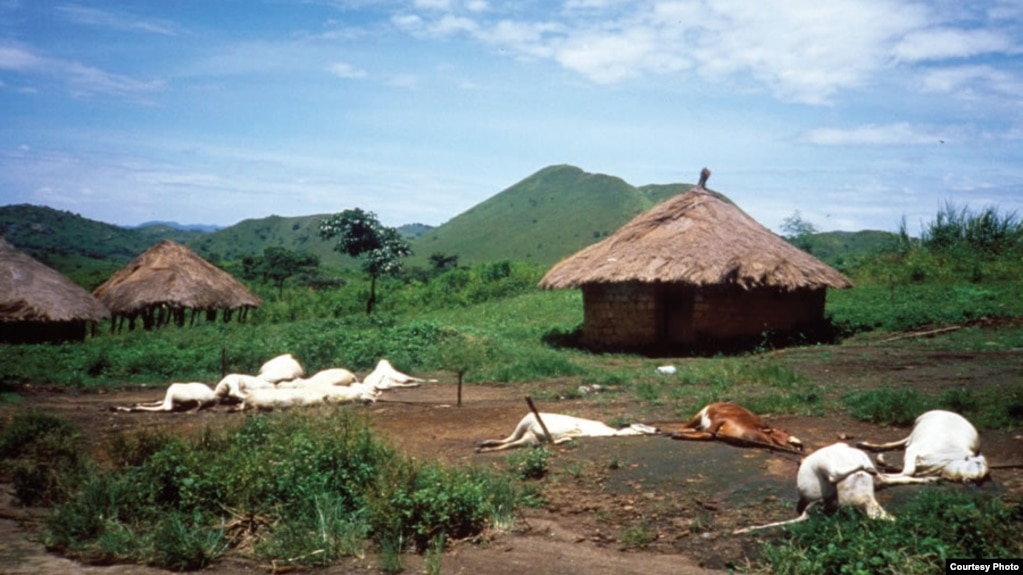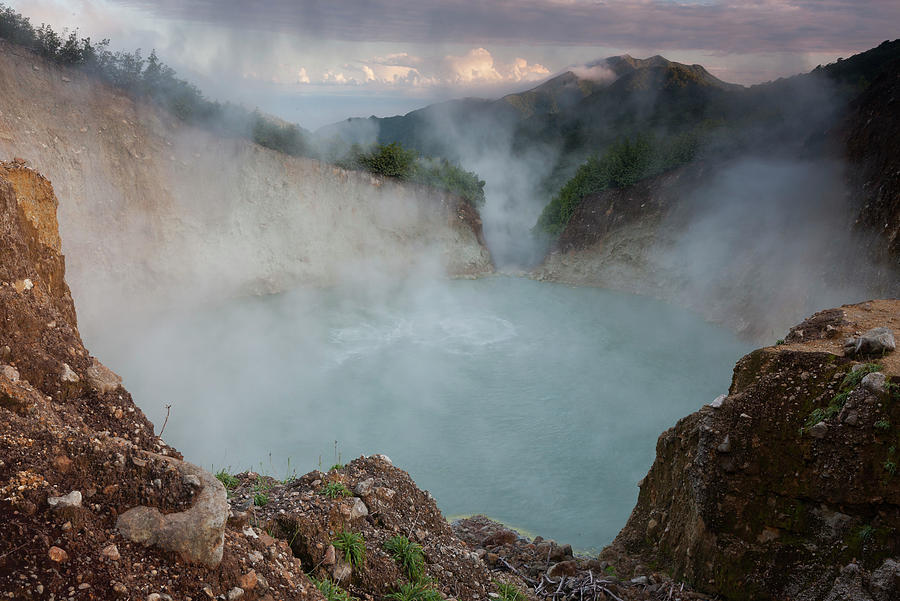There are 307 million lakes in the world. Some are pocket-sized, covering less than a tenth of a hectare. Others are huge and easily mistaken for the sea. Taken together, they’re pretty similar, except for the following, which you won’t mistake for others.
Large scale killer lake – Cameroon
Cameroon’s Lake Nyos is famous for its murderous history. And it can’t be considered a reformed offender. It is known to kill again, predestined by its curious geology.

For the body of water is adjacent to the volcanic plain of Oku, on the edge of an inactive volcanic zone. And beneath its floor lies a pocket of magma from which carbon dioxide leaks into the lake. In 1986, there was an increase in seismic activity in the region, and ground shaking. in which some of the accumulated gas was released to the surface in the so-called Limnic eruption. Jokes about the lake’s bloating and gassiness are misplaced here because the event resulted in tragedy.

The gas cloud killed every living thing within a twenty-five-kilometre radius. The dead animals numbered in the tens of thousands, and the human death toll was 1,746. Lake Nyos thus made history as the source of nature’s first mass asphyxiation. Significantly, the lake has since been refilled with carbon dioxide, and there is reason to suspect that a similar eruption could happen again in the future.
So if you see a giant frothing water fountain on the surface of this lake, look hard. It will be an image to remember for the rest of your life. Which won’t be long.
Lake of Fire in Bangalore, India
We usually extinguish flames with water, and a scenario in which the water itself burns is not really one of the most common ones. But in Bengaluru, India, anything is possible. Last year, for the fifth time, a lake caught fire.

The explanation for this event is not a miracle but sheer carelessness. For decades, untreated sewage from Bengaluru’s eleven million inhabitants has been flowing into this suburban lake. And hundreds of industrial plants and chemical factories also dump liquid process waste here. The site is not so much water as a one-thousand-hectare landfill covered in toxic foam.
The frightening concentrations of phosphate and nitrate mixtures are complemented by flammable methane. This is produced below the surface by bacteria decomposing waste on the bottom when oxygen is reduced. According to one theory, garbage collectors burning copper from cables on the shore may have caused the fire, which ‘migrated to the surface’. Experts do not rule out the possibility of simple spontaneous combustion.
Anything is possible on Lake Bellandur. The last time they fought here, it took 30 hours. Although India is home to 18 per cent of the world’s human population, the country has only four per cent of the world’s surface water resources. And their quality is well demonstrated by the unfortunate Bellandur.
Indian baths from Canada
It could be a perfect spa, but they preferred to make a reservation. And maybe it’s better that way. Otherwise, the tourists would probably be trampled on the shores of Lake Klikuk. The mineral qualities of the waters here could satisfy anyone.

If you’re going to a spa, your doctor will usually recommend one where the composition of the water corresponds to your health ailments. At Klikuk Lake (also called Kōlil’x, Kliluk or simply Spotted Lake), located in Canada’s Okanagan Valley, you don’t have to choose. They have them all here. In fact, the bedrock carries natural deposits of magnesium, calcium and sodium sulphate. And slightly less concentrated deposits of silver, titanium and eight other elements of medical interest. There are also sulphur springs. In short, it’s all here.

However, the indigenous Syilx people also used the beneficial effects of the baths extensively in their indigenous healing practices. In the summer, most of the water evaporates and minerals form crystallised clumps and deposits on the surface. These are essentially walkways that can support the weight of an adult. So in theory, you can walk on the magnesium mineral crust, and choose your bath according to your mood.
In reality, you can only admire Klikuk from behind a wooden fence. The grounds are fenced off and inaccessible. The indigenous people bought it and protect it as their traditional natural and cultural heritage.
The asphalt lake of Trinidad
It covers an area of over forty hectares and is about seventy metres deep. And although it is located in the picturesque region of La Brea, on the tropical paradise island of Trinidad, this lake is not for swimming. Unless you want to be preserved for posterity.

Pitch Lake is a giant asphalt lake. The largest on planet Earth. It was probably formed by the sliding of the earth’s plates, which loosened and mixed layers of oil, clay, water and mud. But local legends may also be true, telling of villagers who disregarded a ban on hummingbird hunting. This angered the island’s deities, who punished them by dousing their village in black doom. However, the tarmac here is of good quality, covering, for example, the road outside Buckingham Palace.

Pitch Lake used to be interesting more from an industrial point of view, as a source of sought-after raw material. Today, it’s most fascinating to scientists studying microbial life here. In fact, the hot asphalt is home to adapted microorganisms that could give us a clue as to what life forms on Saturn’s largest moon, Titan, might theoretically look like. We already know that the surface of that moon is littered with hydrocarbon lakes.
The surface of Trinidad’s asphalt lake is solid. And usually solid enough to walk on. But it’s not worth the risk. The asphalt mining has revealed the well-preserved remains of prehistoric animals that weren’t paying attention.
The boiling lake in Dominica

We cannot recommend swimming in the pride of the Morne Trois Pitons National Park. Not only because it’s forbidden, but deadly. And unrealistic.
While elsewhere you’d rather wait for the water to warm up enough to enter it unscathed, here you’d have to wait for it to cool down adequately. And you’d be waiting because the lake is one giant fumarole under which a volcano is smouldering. The temperature of the water here, according to the latest measurements, varies between 82 and 97 degrees Celsius.
But the biggest risk here is the gases that can fill the volume of the enclosed valley and make the atmosphere unbreathable. People have died of asphyxiation here.
Overlooking the surface from the cliff tops, disappearing in clouds of steam, is an exhausting but safe experience well worth the effort. The boiling lake, located east of the Dominican capital of Roseau, is the second largest of its kind in the world.


